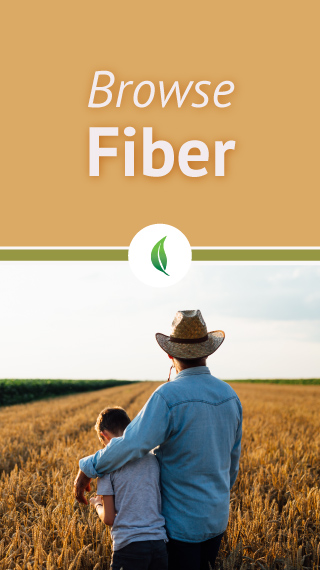
What is Dietary Fiber?
September 29, 2021
We’ve all heard dietary fiber is good for you, but what exactly is it and why do you need it?
Found in fruits, vegetables and whole grains, fiber keeps you regular, plays a role in cholesterol management and helps you maintain a healthy weight. Your body does not digest fiber, rather it passes mostly intact through your digestive system and out of your body.
There are two types of fiber: soluble, which dissolves in liquid, and insoluble, which doesn’t. Soluble fiber forms a gel and is found in oats, peas, apples, carrots, and psyllium. Insoluble fiber (also called roughage) increases bulk in the stool, making it easier to pass. It’s found in wheat bran, nuts, beans, corn, berries and the peel of apples and pears.
Why do you need dietary fiber?
There are many reasons to include dietary fiber in your daily diet:
- Normalizes regularity – and lessens your chance of constipation.
- Supports healthy cholesterol levels. – Fiber from beans, oats and bran may help lower “bad” cholesterol levels and provide other heart-health benefits
- Aids weight management. – Since high-fiber foods are more filling, you’re likely to eat less and stay satisfied for longer.
- Encourages gut health. – A healthy gut ensures your body’s absorbing the nutrients it needs from the food you eat and that there’s a proper balance of good and bad bacteria. Your gut also plays a vital role in keeping your immune system healthy.
What are dietary fiber sources?
It’s recommended that you eat 28 grams of dietary fiber daily, but only 5% of Americans actually do! The good news is that it’s easy to find tasty food sources.
| Food | Serving Size | Dietary Fiber (grams) |
| Split Peas | 1 cup | 16 |
| Oats | 1 cup | 16 |
| Bran Cereal | 1/2 cup | 9-14 |
| Kidney Beans | 1 cup | 11 |
| Avocado | 1 cup | 10 |
| Chickpeas (Canned) | 1/2 cup | 8 |
| Lentils | 1/2 cup | 8 |
| Black Beans | 1/2 cup | 7.5 |
| Pear | 1 medium | 5 |
| Apples | 1 medium | 4.4 |
| Raspberries | 1/2 cup | 4 |
| Almonds | 1 oz. | 3.5 |
| Orange / Banana | 1 medium each | 3 |
| Strawberries | 1 cup | 3 |
Tips for Adding More Fiber to Your Day
For breakfast, choose a high-fiber breakfast cereal with at least 5 grams of fiber. Make your lunch with whole wheat bread that includes 2-4 grams of fiber per serving. Reach for fresh fruits and vegetables for snacks and eat the skins. Popcorn, a whole grain, is also a good for snacking as long as it is butter-free. For dinner add dried peas, beans and legumes to your main dish and use whole-wheat pasta for those tasty Italian dishes.
Adding fiber to your diet too quickly can cause bloating, so go slow and be sure to drink enough water (64 ounces/day). The best way to make sure you’re getting the right amount of fiber is through your everyday diet. If supplementation is needed, always speak to your doctor first.
These statements have not been evaluated by the Food & Drug Administration. These products are not intended to diagnose, treat, cure or prevent any disease. Individual results may vary.



